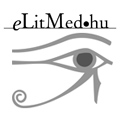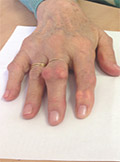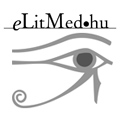The eLitMed.hu medical portal uses computer cookies for convenient operation. Detailed information can be found in the Cookie-policy.
LAM KID - 2014;4(03)
Content
[Forgotten agent: raloxifene]
[The largest group of the patients with osteoporosis is postmenopausal women characterized by a state of menopausal hormone deficiency which is results in accelerated bone loss. This increased bone resorption significantly elevates the risk of bone fractures including the most common type, i.e. vertebral fractures. In addition to the increased risk of fractures, estrogen deficiency affects other organs, thus, increasing the incidence of cardiovascular diseases, cancers, mood disorders and the symptoms of menopausal syndrome in women after menopause. In postmenopausal osteoporosis, the primary objective is to maintain the existing bone mass, a priority for the prevention and treatment of bone fractures. Hormone deficiency may be prevented by the administration of estrogen but the treatment may have adverse effects such as increased risk of endometrial cancer. An etiological therapy is desirable where the compound used for treatment exerts effects similar to that of estrogen to prevent postmenopausal bone loss as well as reduces the risk of cardiovascular disease without the stimulation of reproductive tissues.]
[Investigation of vitamin D supply in hospitalized patients]
[Recent studies have shown that adequate vitamin D level is essential in the maintenance of normal immunological status and presumably, it has a remarkable role even in the healing of some diseases. Vitamin D deficiency is a common phenomenon worldwide. Presently, the accepted marker of vitamin-D status is the total-25-hydroxy- D-vitamin [t-25(OH)D], its level depends on the specific (DBP) and aspecific (albumin) binding proteins. As known, the level of binding proteins may change in the hospitalised patients therefore, the presently used marker could not be reliable for the vitamin status in these cases. Our aim was to measure the D-vitamin supply among hospitalized patients, taking into account the level of binding proteins. METHODS - 401 cases (average age 70±14 years) were sorted from Internal Medicine (IM; 68), Intensiv Care Unit (ICU; 58), Traumatology (203 patients suffered hip fracture) and Dialysis Center (72 patients with end stage renal disease). 127 age and sex matched persons with active lifestyle served as control group. We determined t-25(OH)D, DBP, parathormon (PTHi), albumin and the albumin corrected Ca level. The bioavailable and free vitamin fractions and the free index were calculated. RESULTS - Based on the measured t- 25(OH)D, patients have more frequently suboptimal D-vitamin levels, compared to the control group (66% vs. 97%). Severe Dvitamin deficiency occured nearly 8 times more likely (6% vs. 47%) in the hospitalized patients. Chronic renal failure and malignant diseases seem to be significantly negative influencing factors in the metabolism of the vitamin D. The level of DBP, albumin, t-25(OH)D, Bio-25(OH)D was significantly lower in the patients who died. CONCLUSION - In most cases, t-25(OH)D levels show similar results about the vitamin- D supply than other calculated 25(OH)D fraction ,except for the patients of ICU and IM . The t-25(OH)D, the Bio- 25(OH)D, the DBP and the albumin levels seem to be a good prognostic marker of the outcome.]
[Role of patient clubs in successful treatment of osteoporotic patients]
[The significance of osteoporosis is well known, however, the number of patients receiving treatment is only a small fraction of ideal. Besides, the fact that the population is uninformed, the difficulties of making an appointment with a specialist and the unsatisfactory communication of the doctor all play a part in the fact that a high proportion of patients receiving mediation give up treatment prematurely. The Inter - na tional Osteoporosis Foundation supports the establishment of public patient clubs with regular training courses and grants and by doing so it also acknowledges their importance in the prevention and treatment of osteoporosis. The publication, based on the questionnaire filled in by the members of the first Hungarian patient club, the Hungarian Society of Osteopo - rosis Patients in district 3rd, introduces the Hungarian results and points out how important patient clubs are in increasing the success of treatment and it also draws attention to the necessity of establishing further patient clubs in the future.]
1.
Clinical Neuroscience
[Headache registry in Szeged: Experiences regarding to migraine patients]2.
Clinical Neuroscience
[The new target population of stroke awareness campaign: Kindergarten students ]3.
Clinical Neuroscience
Is there any difference in mortality rates of atrial fibrillation detected before or after ischemic stroke?4.
Clinical Neuroscience
Factors influencing the level of stigma in Parkinson’s disease in western Turkey5.
Clinical Neuroscience
[The effects of demographic and clinical factors on the severity of poststroke aphasia]1.
2.
Clinical Oncology
[Pancreatic cancer: ESMO Clinical Practice Guideline for diagnosis, treatment and follow-up]3.
Clinical Oncology
[Pharmacovigilance landscape – Lessons from the past and opportunities for future]4.
5.










